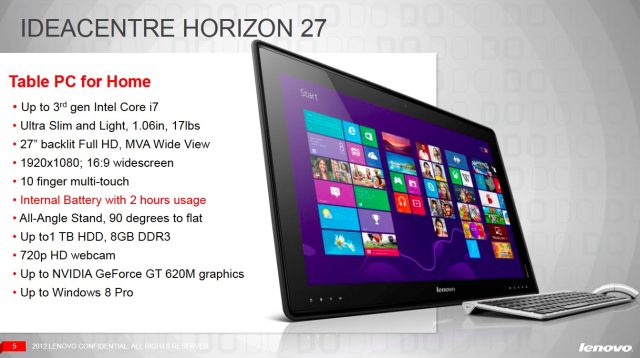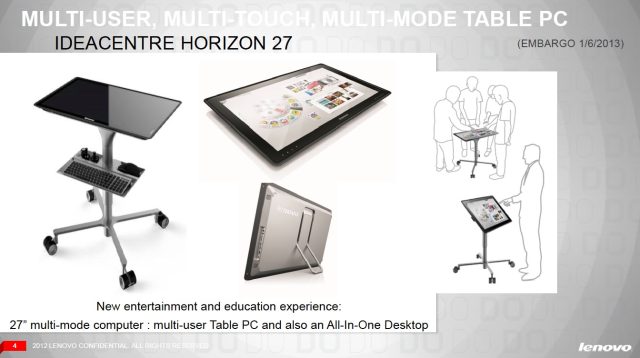Samsung’s just announced its 2013 lineup of home theater and audio devices. The new set features an interesting mix of vintage and developing technologies designed to combine classic sound with modern connectivity. More » ![]()
from Gizmodo

For everything from family to computers…
In a recent report, it looks like Apple’s iPhone 5 is losing its grip on the everyday consumer. According to Consumer Reports, the iPhone 5 is now listed as the lowest rated top 3 smartphone on each carrier, minus T-Mobile who haven’t had the device on their network. Topping the lists are the Samsung Galaxy S3 for T-Mobile, the LG Optimus G for AT&T and Sprint, and the RAZR HD’s for Verizon. Crazy enough, the iPhone didn’t even make it onto Big Red’s list, which is actually quite surprising.Â
How Consumer Reports handle their rating of said devices is unknown to me, but it is great to see Android becoming the forerunner in smartphone operating systems. Android devices have certainly come a very long way in terms of consumer praise and advancements in both software and hardware since the days of iPhone supremacy.
Guess it’s time to start awaiting the iPhone 5S and the magical features it will wield.
Via: Business Insider
from Droid Life
NVIDIA Rolls Their Own Handheld Console: Project Shield, Powered By Tegra 4
Though most of the important launch details of Tegra 4 were leaked weeks in advance, NVIDIA did manage to keep their final major CES announcement under wraps to the very end. Wrapping up their CES presentation, NVIDIA has announced that they will be entering into the handheld console business with their own Tegra 4 powered console, dubbed Project Shield.
While we’re still waiting on NVIDIA for further details, what we do know so far is that Project Shield is essentially a handheld console built around NVIDIA’s recently announced Tegra 4 SoC. Details on Tegra 4 are still sparse since NVIDIA has not announced the individual SKUs, but we do know that the top-end configuration contains 5 ARM A15 CPU cores in a 4+1 configuration similar to Tegra 3, and on the GPU side is backed with a hereto unknown GPU architecture composed of 72 GPU cores.
All of this is built into an oversized game controller that is configured very similarly to the PS3 DualShock 3 controller, possessing 2 concave thumbsticks, a 360-like D-pad , 4 face buttons, and 4 shoulder triggers/buttons (2 on each side). Topping off the console is a 5†720p multitouch display (no word yet on whether it’s OLED or LCD) that flips over the console in a clamshell fashion. Meanwhile powering the device will be 38 watt-hours of Lithium-Ion battery cells; this is roughly between the Nexus 10 (33.75Wh) and the iPad 3/4 (42.5Wh), meaning Shield will have what amounts to a tablet-capacity battery.
Backing that hardware, storage is provided by a combination of internal and external storage; external storage is provided by a micro-SD card slot found on the back side of the handheld. Also found on the back side of the handheld are a number of other ports: micro-HDMI for display output (4K resolution supported!), micro-USB for data connectivity, and a standard 3.5†audio jack for headphones. Wireless connectivity is also available, with WiFi for data and Miracast plus additional formats for video output.
On the software side of things Project Shield is running what NVIDIA is calling “pure Androidâ€, which in this case is presumably a reference to them not doing any skinning/customizations, ala MotoBlur, TouchWiz, and other OEM customizations. This means that Project Shield is capable of running standard applications (something NVIDIA made sure to demo) and is otherwise usable as a standard Android device. Meanwhile NVIDIA’s Shield application is where gaming takes place, effectively launching users into NVIDIA’s own sandbox, where gamers can pick up Shield-optimized games from the TegraZone store and then run them on the device.
Finally, on the software side of things NVIDIA is also going to be offering a level of integration between Project Shield and their GeForce products by offering their own Splashtop-like remote gaming experience. By leveraging the Video Codec Engine video encoder inside their recent GTX 600 video cards, Project Shield devices will be able to connect to PCs to do remote gaming. To show this off NVIDIA showed a GTX 680 equipped PC running Steam in Big Picture mode being streamed to Shield, the logical pairing to Project Shield’s dual nature as a portable computing device and a controller. Shield will of course also be able to function as an endpoint for any cloud game service providers using NVIDIA’s GeForce GRID technology.
Edit: At this point NVIDIA has not announced hard pricing or availability, but we have been given guidance that “Shield will launch in Q2 at a price competitive with other mobile gaming systems and tablets.” Since the critical component here is Tegra 4, the Q2 projection for Project Shield’s availability most likely hinges on when exactly T4 will become available this year.
| Handheld Specification Comparison | ||||||||
| Â | Project Shield | Sony PS Vita | Nintendo 3DS XL | Google Nexus 7 | Apple iPad mini | |||
| Display | 5-inch 1280 x 720 | 5-inch 960 x 544 OLED | 4.9-inch 800 x 240 + 4.2-inch 320×240 TN | 7″ 1280 x 800 IPS | 7.85-inch 1024 x 768 IPS | |||
| CPU | NVIDIA Tegra 4 (4+1 Cortex A15) |
4 x Cortex A9 |
2 x ARM11 |
1.3 GHz NVIDIA Tegra 3 (T30L – 4 x Cortex A9) | 1GHz Apple A5 (2 x Cortex A9) | |||
| GPU | NVIDIA Tegra 4 (72 GPU cores) | PowerVR SGX543MP4 | PICA 200 | NVIDIA Tegra 3 (T30L) | PowerVR SGX543MP2 | |||
| Connectivity | WiFi, HDMI, USB | WiFi, USB | WiFi | WiFi , USB | WiFi, Lightning | |||
| Memory | N/A | 512MB + 128MB | 128MB + 6MB | 1GB | 512MB | |||
| Storage | N/A + Micro-SD | Proprietary | 2GB + Micro-SD | 16GB | 16GB | |||
| Battery | 38Wh | 8.2Wh | 6.5Wh | 16Wh | 16.3Wh | |||
| Starting Price | N/A | $249 | $199 | $199 | $329 | |||
Â
![]()
from AnandTech

Lenovo is just one of the many PC makers bringing new designs to CES this week. Many of these will simply be refreshed or refined versions of the first round of Windows 8 computers—either convertible laptops or more traditional desktops and laptops with integrated touchscreens—but a few particularly interesting designs may yet rise above that fray.
One of these PCs is Lenovo’s IdeaCentre Horizon 27, a 27-inch all-in-one desktop PC with an integrated battery and 1080p ten-point touchscreen. Lenovo is marketing the device as a “table PC.” Sure, a kickstand can be unfolded to allow the computer to sit on a desk as would any all-in-one. But this PC can also be laid flat on a table for use by multiple people, or mounted on the pictured roller table for use while standing. (We’ve previously stated a touchscreen all-in-one makes the most sense ergonomically while positioned at about waist height on a standing person.)

In concept the Horizon is quite similar to Sony’s Tap 20, a smaller all-in-one that also included an integrated battery and foldable kickstand allowing it to be laid flat on a table. The Horizon’s larger size will mean more people can gather around it at once (and the roller table may make it more useful for people who prefer to stand at their desks), but the two machines are definitely cut from the same cloth. Like the Tap 20, multiplayer touch-enabled games figure heavily into Lenovo’s promotional material for the device.
Read 1 remaining paragraphs | Comments
from Ars Technica